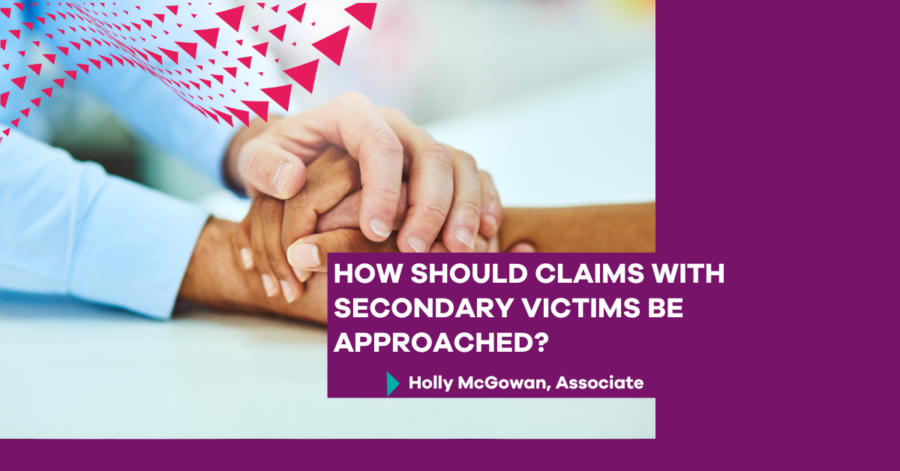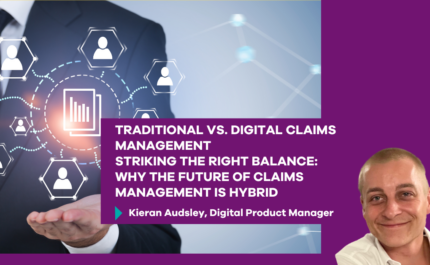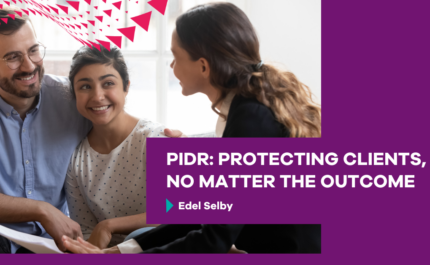
On 11 January 2024, the Supreme Court handed down an important judgment clarifying how claims involving secondary victims should be approached. This is a tricky area of law which involves tragic and heartbreaking cases.
What is a ‘Secondary Victim’?
The law distinguishes between victims who are directly involved in an accident and those who are affected by witnessing that accident. By way of example, in a road traffic accident where a car hits a pedestrian in front of a witness, the pedestrian would be a ‘primary’ victim and the witness would potentially be a ‘secondary’ victim. If the witness went on to suffer psychiatric injury as a result of witnessing the accident, then they may have a personal injury claim, subject to whether they meet certain additional criteria.
In Paul v. Royal Wolverhampton NHS Trust, the Supreme Court considered what criteria that secondary victim would have to meet. They ultimately decided that the criteria is:
- Close tie of love and affection to the primary victim;
- Proximity to the event or its immediate aftermath;
- Direct perception of the event or its immediate aftermath;
- Suffers a psychiatric injury as a result of witnessing the accident.
How Did We Get Here?
The law has recognised for a long time that witnessing an accident or it’s immediate aftermath can cause psychiatric injury and give rise to a claim which is separate from any claim that the primary victim might have. The Court has however imposed control mechanisms that arbitrarily limit the potential claims that can be brought be secondary victims. This is due to a concern that without these limits, the floodgates would open as almost every accident would most likely give rise to several associated secondary victim claims. The Court has also responded as the understanding of psychiatric injury and how this may be caused or manifest has developed.
The modern approach to secondary victim cases arose from the case of Alcock v. Chief Constable of South Yorkshire Police following the Hillsborough disaster. In that case, the Chief Constable of South Yorkshire accepted liability in negligence for the deaths and physical injuries that occurred as a result of the failings to adequately manage and police the event. It was not clear however whether those who didn’t suffer direct injury as a result of the accident, but whose relatives were killed in the disaster should be able to bring claims as secondary victims. This issue was considered by the House of Lords who ruled that a secondary victim’s claim should succeed if:
- There was a close tie of love and affection to the primary victim;
- The psychiatric injury arose from a sudden and unexpected shock suffered by the Secondary victim;
- The secondary victim was personally present at the scene of the accident or was in the more or less immediate vicinity and witnessed the aftermath shortly afterwards (for instance Claimants who saw their loved one’s body in the mortuary or saw the disaster unfold on television did not meet this criteria);
- The injury suffered arose from witnessing the death or, extreme danger to or injury and discomfort suffered by the primary victim;
- There is a close temporal connection between the event and the secondary victim’s perception of it combined with a close relationship between the secondary victim and primary victim.
What Happened In Paul, Polmear and Purchase?
The circumstances of these cases are undeniably heartbreaking and tragic. They all involve a close family member witnessing the death of a loved one or its immediate aftermath as a result of a failure to adequately diagnose and treat that loved one.
In Paul, whilst out shopping with his young daughters, aged 9 and 12, Mr Paul suffered a cardiac arrest and collapsed in the street. His daughters saw him fall backwards and hit his head on the pavement. Help was summoned and the daughters witnessed the unsuccessful attempts to treat their father. He was taken by ambulance to hospital, but was declared dead on arrival.
The Claimants alleged that the Defendant in Paul was negligent in failing to arrange appropriate treatment when Mr Paul complained of chest and jaw pain some 14 months earlier and that if appropriate treatment had been provided, his death could have been avoided.
In Polmear, Miss Polmear, then aged 6 was seen by her GP following a series of strange episodes during which she could not breathe, appeared pale and turned blue after a few minutes. She was referred to a paediatrician, but there was a failure to diagnose pulmonary veno-occlusive disease. Sadly, she died from the effects of this disease in the presence of both of her parents.
In Purchase, Miss Purchase died from severe pneumonia. Three days earlier, she had attended an out-of-hours clinic with her mother. She had felt unwell for several weeks and had made two previous visits to her GP. At the out of hours clinic, the doctor failed to diagnose her condition and sent her home with prescriptions for antibiotics and an antidepressant. Miss Purchase’s condition did not improve and she went on to complain of heart palpitations. Her mother went out that evening to a pre-planned event and returned home to find her daughter lying motionless. Her mother attempted mouth-to-mouth resuscitation which was unsuccessful. In addition, her mother later realised that she had a missed call and a voice message from her daughter on her phone. This included her daughter’s dying breaths. The voice message ended approximately 5 minutes before her mother got home.
What Did The Supreme Court Decide?
An important point to highlight is that the Court started their judgment by acknowledging that it is natural and expected that the death of someone’s loved one will cause grief and suffering and can have prolonged and profound effects on physical and mental health. The general rule however is that the psychological impact of the death of a loved one is not in and of itself capable of giving rise to a personal injury claim, no matter how tragic the circumstances and consequences of that death.
Secondary victim claims exist as an exception to that general rule and are governed by control mechanism as highlighted above. By their very nature, these control mechanisms are arbitrary. They exist to enable the Court to logically approach and distinguish cases. However, one can imagine that in respect of every one of the control mechanisms, there are some cases where the outcome is very unfair as the secondary victim has in fact suffered profoundly as a result of the accident. For instance, one can imagine a scenario where witnessing another human being suffering injury or death could result in that witness suffering a psychiatric injury even if they didn’t know the primary victim. Similarly, the distinction between witnessing your loved one being injured in an accident and having to identify their body in the mortuary is arbitrary. Both events will have a significant impact and have the potential to result in psychological injury.
In Paul, Polmear and Purchase, the Supreme Court was considering whether a secondary victim claim can or should include cases where the secondary victim witnesses the death or injury or a close relative, not in an accident, but from a medical condition which the Defendant negligently failed to diagnose and treat. In these scenarios, it is very unlikely that the secondary victim would have witnessed the actual negligence i.e. the failure to accurately diagnose and treat the primary victim. But in each of these claims, the secondary victim did witness the tragic consequences of the negligence. As such, the secondary victims in all the cases argued that the Defendants should be responsible not only for the death itself, but also for the psychiatric illness suffered by the secondary victims as a result of witnessing the death or its immediate aftermath. The Supreme Court however concluded that it is necessary to witness an ‘accident’ by which they mean an external event which causes or has the potential to cause injury. It is the witnessing of this discrete external event (or its aftermath) that is key rather than witnessing the death or injuries. In Paul, Polmear and Purchase, there was no external event but rather the manifestation of a medical crisis and as such, no secondary victim claims could be brought.
Notably Lord Burrows provided a dissenting judgment which argued that the death should be seen as the external event in these cases. He noted that insisting on an accident occurring would needlessly deny recovery for secondary victims in almost all medical cases.
Helpfully, the Supreme Court have clarified that a secondary victim does not need to have suffered psychiatric illness because of a ‘sudden shock’. The Court noted that this term arose from a historic understanding of psychiatric injury as being an assault on the nervous system. The key feature is instead that the Claimant must have suffered a recognised psychiatric illness as a result of being present at the scene of the accident (or its immediate aftermath) in which a loved one was killed, injury or imperilled.
Similarly, the Supreme Court ruled that it is not necessary to prove that the event was ‘horrifying by objective standards’. Whilst many of these events are indeed objectively horrifying, it puts a terrible burden on Claimants to have to try and prove that their experience was sufficiently horrifying compared to other cases. Furthermore, as the Court summarises in the judgment, it forces judges to engage in an exercise of comparing one person’s tragedy with another’s and trying to rank those experiences on a ‘spectrum of horror’. It cannot be correct for the Court to have to engage in judging whether the death of one person’s child in an accident is more or less horrifying that the death of another’s child. Instead, the Claimant need only prove that it was reasonably foreseeable that the Defendant’s negligence may cause them injury.
Conclusion
The Supreme Court concludes that wherever the line is drawn in respect of who can bring a secondary victim claim, ‘some people who suffer what may be serious illness in connection with the death or injury of another person will be left uncompensated’. The limitations imposed by the Court cannot be explained as distinguishing between those who have suffered as a result of another party’s negligence and those who have not as it is agreed that all the Claimants in Paul, Polmear and Purchase suffered greatly as a result of negligence. From a moral and ethical standpoint, there is no meaningful distinction between the suffering of those Claimants and the suffering of a Claimant who witnesses a road traffic accident. Instead, the Court justifies the limitations that are imposed on these claims by the need to restrict the class of eligible claimant and to apply restrictions which are reasonably straightforward, certain and comprehensible.
The only potential recourse to reform how secondary victims are treated by the law and where the line is drawn is for Parliament to intervene and introduce new legislation to tackle these issues. Indeed in his dissenting judgment, Lord Burrows noted that over 25 years ago when he was the Law Commissioner, the Law Commission recommended legislative reform that would retain the requirements of reasonable foreseeability of psychiatric illness and a close tie of love and affection to the primary victim, but dispense with the other restrictions such as closeness in time and space to the event, perception through unaided senses and the need for the event to be shocking) should be abandoned. The Government did not accept this recommendation though and the law has continued to be developed through the Courts.



